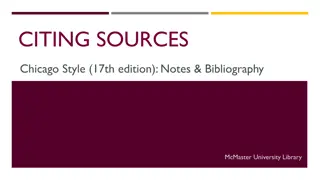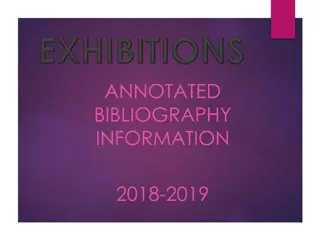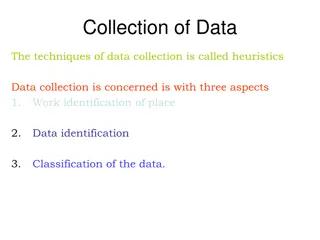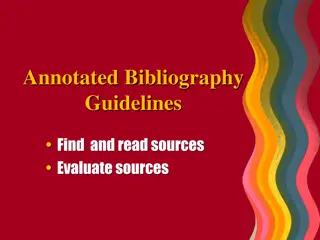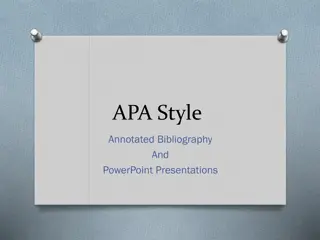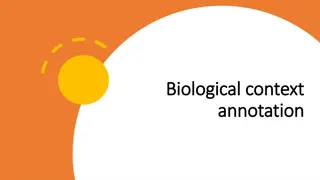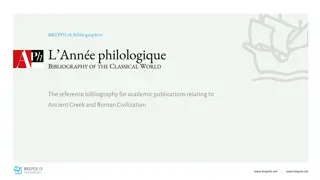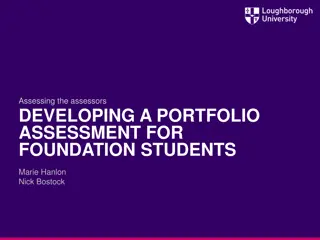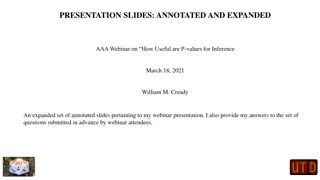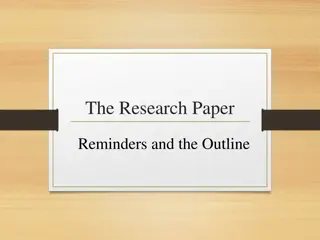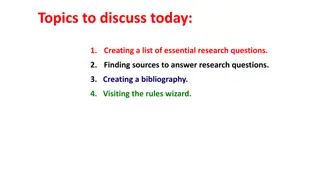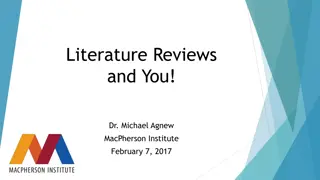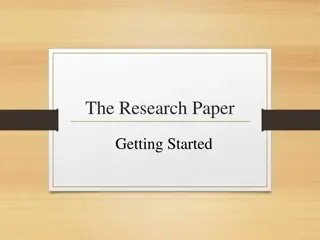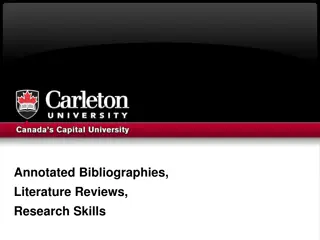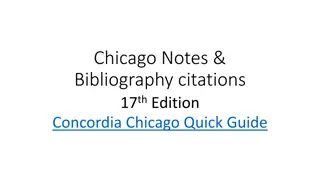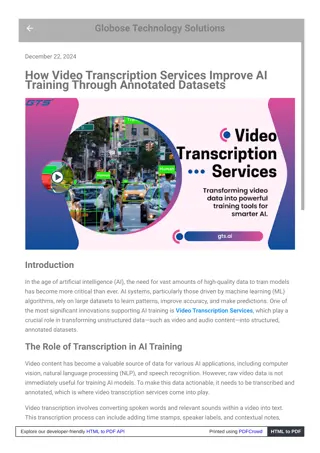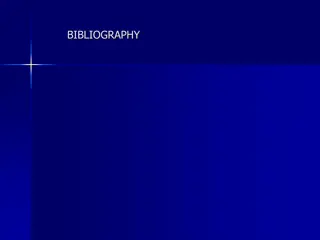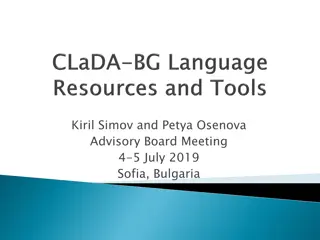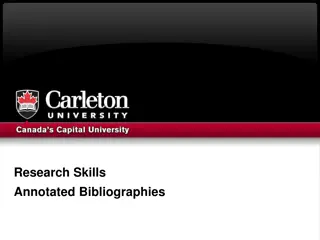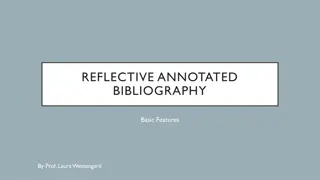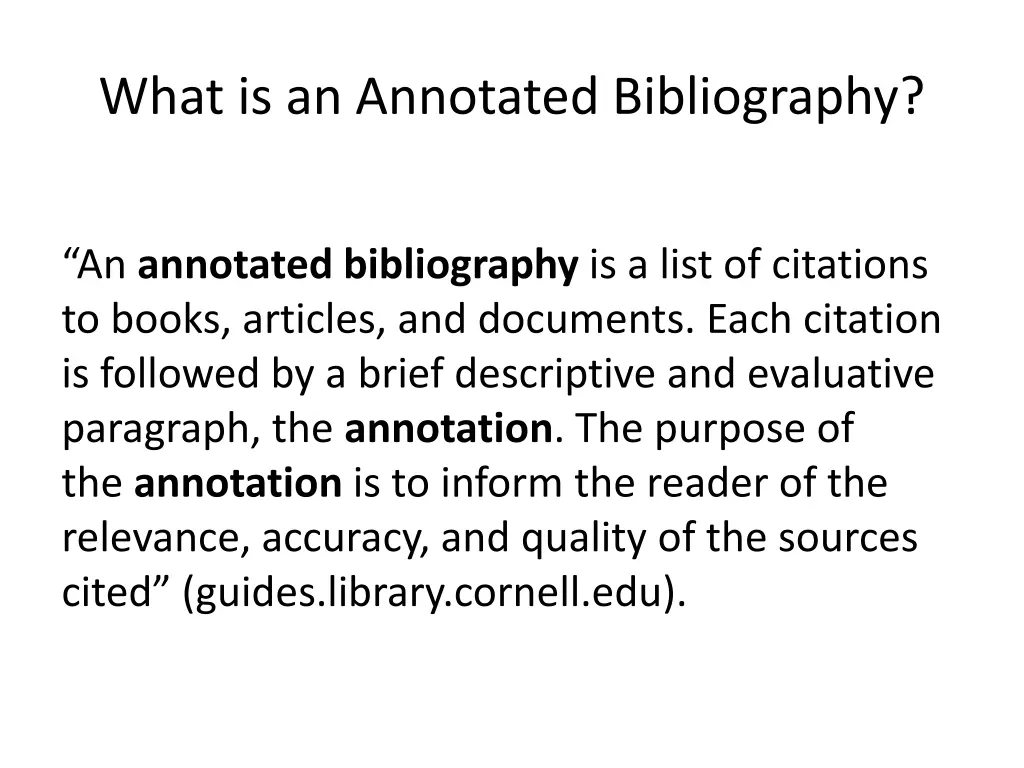
Creating Annotated Bibliographies: A Comprehensive Guide
Learn about annotated bibliographies, their purpose, differences from abstracts, creation process, and evaluation for exhibitions. Understand the example and grade breakdowns for credible sources.
Download Presentation

Please find below an Image/Link to download the presentation.
The content on the website is provided AS IS for your information and personal use only. It may not be sold, licensed, or shared on other websites without obtaining consent from the author. If you encounter any issues during the download, it is possible that the publisher has removed the file from their server.
You are allowed to download the files provided on this website for personal or commercial use, subject to the condition that they are used lawfully. All files are the property of their respective owners.
The content on the website is provided AS IS for your information and personal use only. It may not be sold, licensed, or shared on other websites without obtaining consent from the author.
E N D
Presentation Transcript
What is an Annotated Bibliography? An annotated bibliography is a list of citations to books, articles, and documents. Each citation is followed by a brief descriptive and evaluative paragraph, the annotation. The purpose of the annotation is to inform the reader of the relevance, accuracy, and quality of the sources cited (guides.library.cornell.edu).
ABSTRACTS VS. ANNOTATIONS Abstracts are the purely descriptive summaries often found at the beginning of scholarly journal articles or in periodical indexes. Annotations are descriptive and critical; they may describe the author's point of view, authority, or clarity and appropriateness of expression.
The Process Creating an annotated bibliography calls for the application of a variety of intellectual skills: concise exposition, succinct analysis, and informed library research. First, locate and record citations to books, periodicals, and documents that may contain useful information and ideas on your topic. Briefly examine and review the actual items. Then choose those works that provide a variety of perspectives on your topic. Cite the book, article, or document using the appropriate style. In this case, we will use MLA format.
For 2018 Exhibitions: Our annotated bibliographies for Exhibitions will each include ONE paragraph which includes the following 4 elements: 1. Evaluation of author s credibility 2. Intended Audience 3. Compare work with another resource 4. Explain how work supports your understanding of your topic
Example: Waite, Linda J., et al. "Nonfamily Living and the Erosion of Traditional Family Orientations Among Young Adults." American Sociological Review, vol. 51, no. 4, 1986, pp. 541-554. The authors, researchers at the Rand Corporation and Brown University, use data from the National Longitudinal Surveys of Young Women and Young Men to test their hypothesis that nonfamily living by young adults alters their attitudes, values, plans, and expectations, moving them away from their belief in traditional sex roles. They find their hypothesis strongly supported in young females, while the effects were fewer in studies of young males. Increasing the time away from parents before marrying increased individualism, self-sufficiency, and changes in attitudes about families. In contrast, an earlier study by Williams cited below shows no significant gender differences in sex role attitudes as a result of nonfamily living.
BREAKDOWN by GRADE LEVEL 9th Grade: 3 credible sources 10th Grade: 5 credible sources 11th Grade: 7 credible sources
At this time, please take out your Exhibition Packet. Find this page!
Annotated Bibliographies are due Thursday March 29th. Don t procrastinate!! Visit this website for support and more information (link on benholtschool.org) http://guides.library.cornell.edu/annotatedbibliography

